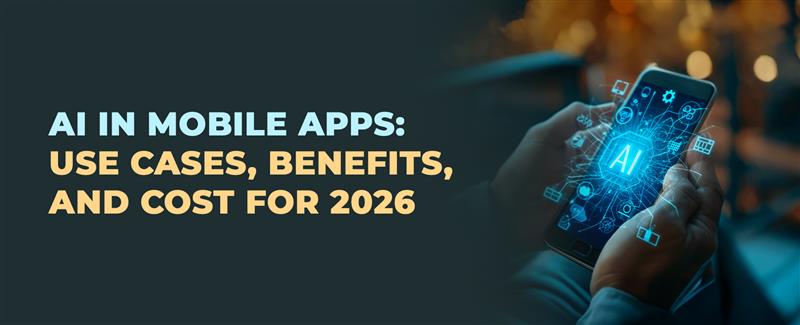Winning With SWOT: A Secret Weapon To Mobile App Development Process
5 Oct 23 


You need to comprehend the fundamentals of mobile app development if you are an app marketer, a company executive, or a customer. Businesses need to know that your software fits a specific market segment and is best suited for a particular consumer base with precise needs.
You probably now know that starting a mobile app development company costs capital and, if done poorly, may harm your customers in the future. Thus, SWOT analysis mobile app development comes into the play.
Making an economically practical software for businesses is a difficult task, though. You might be shocked that the success rate for developing trustworthy mobile applications is extremely poor – approximately 0.01%. By carefully examining the fundamentals of your brand, including its strengths and flaws, you may avoid app failure.
The need for organizations to improve their strategy development is more than ever, given the quickly shifting nature of the business due to digital transformation. The SWOT analysis is one of the most often utilized techniques in the planning toolbox.
This method depends on examining a company’s internal and external settings to acquire insights that can be implemented. Using a SWOT analysis for your mobile app idea, you may better understand your company and its surroundings. What, however, is a SWOT analysis? Let’s investigate it further.
What is SWOT Analysis?
Strengths, Weaknesses, Opportunities, and Threats are also known as SWOT analysis. Companies use SWOT analysis as a tool for strategic planning to evaluate the internal and external elements that impact them.
This entails assessing the opportunities and risks from the outside world and the internal strengths and limitations.

Let’s examine what every one of these groups stands for:
Strengths: The company’s domains of strength are those in which it thrives or has a competitive benefit over others.
Weaknesses: The points where the business is disadvantageous. This includes the domains where the company has to strengthen its performance or encounters difficulties.
Opportunities: This depicts the outside forces that an organization can use to expand.
Threats: These outside elements might lead to risk or difficulty.
When should you conduct a SWOT analysis for your mobile app?
SWOT analysis aids app developers, advertisers, and companies comprehend their app’s existing competitive edge and make defensible choices regarding its future growth and promotion.
Opportunities and threats are external aspects that affect your app’s performance, whilst strengths and weaknesses assist you in examining internal capabilities.
SWOT analysis is crucial for your company because it gives you a thorough insight into your existing position, identifies development opportunities, and aids in the strategic decision-making necessary to reach your business objectives.
Your app’s SWOT analysis enables you to examine its positive, negative, and unpleasant aspects while guiding it toward development by identifying potential problems.
You should do a SWOT analysis at several points throughout the mobile app development lifecycle. One can perform it at the beginning of development, before significant upgrades, and in reaction to competitive changes. You maintain your app’s positioning and adaptability by periodically reevaluating it.
How do you Conduct a SWOT Analysis for your Mobile App Development Idea?
Mobile app development is challenging as it involves several internal and external factors to consider before its development. The way the users accept the mobile app is highly significant in the app idea processing.
Hence, with SWOT analysis, you can get the right target of what idea will steal the market and the user’s perspective. Thus, let’s determine how a SWOT Analysis can be performed for your mobile app development idea.
1. Strengths
Finding your app’s strengths is the first step in SWOT analysis. This entails examining your mobile app’s strengths in the present state with an open mind and in detail.
You must ask yourself certain essential inquiries before filling out the Strength part:
- Which distinct mobile app characteristics and functions are the most popular with your consumers?
- What distinguishes you from your rivals?
- What favorable comments have users made regarding your app’s functionality and user experience?
- What level of technical knowledge and proficiency does the development team have?
- Do any connections that support the performance of your mobile app exist?
- In what way does your app use consumer information and insight to enhance the user experience?
Focus your inquiries on unique selling points, the UI/UX design team, technical issues, and functionality to complete the Strengths area. Your ability to concentrate on your strengths will increase as you add them.
2. Weaknesses
It’s essential to admit your app’s weaknesses after determining its strengths. This entails identifying the domains in which your software needs to be improved to increase accessibility, value propositions, and customer experience in general.
In the area of your weaknesses, be sure to be honest with yourself.
- Are there persistent bugs or technical problems that must be fixed with your software?
- Do your rivals’ apps have features that your mobile app doesn’t?
- What is your app’s retention rate and turnover rate, and what causes that turnover?
- Is the flexibility of your application vulnerable to any restrictions?
- How quickly does the development team respond to issues that are reported?
- What characteristics are lacking in your app that prevent users from using it?
- Do you possess the resources necessary to add additional capabilities and features?
Try to concentrate on this section’s sections on customer comments, issues and problems, lacking attributes, and analyses of rivals. Finding additional flaws can strengthen your app and raise the likelihood of its successful launch.
3. Opportunities
You can use opportunities beyond your control to your app’s benefit. This part addresses current developments and advantageous circumstances. Hence, it gives your mobile app an edge over its rivals and increases its audience.
Consider the following inquiries as you complete the opportunity part:
- Do any novel markets or populations that your app may potentially serve exist?
- Does your mobile app make use of novel patterns or innovations?
- Do you have any fresh possible collaborations or connections that would help your app?
- Can your software do a novel task not addressed by already available options?
- Does your mobile app development process use social media to expand its user base?
- Are there any fresh approaches to monetizing apps?
This component effectively creates an innovative path for your current project, placing it where it will stand out the most. Keep an eye out for novel app trends, strategies to increase your user base, and ways to improve the features of your mobile app.
4. Threats
Threats often remain and follow in the dim lighting. Don’t be afraid of them; bring them to the front and take them off one at a time. Rivals, changes in law, safety hazards, and other outside factors that we must consider can all pose threats.
Identify threats by asking yourself:
- Do any ethical or legislative regulations that could impact your mobile app exist?
- What are the confidentiality and safety threats involving the data in your app?
- What tactics are your rivals using to threaten you?
- Could your mobile app be impacted by shifting customer actions?
- Do any industry-specific variables have the potential to affect your profit?
- Can your mobile app withstand bad press or user backlash?
- Is your app keeping up with the latest innovations?
It is important to recognize threats such as rival tactics, market movements, security needs, and regulatory demands to be ready in advance and address dangers as they arise.
Execution of SWOT Analysis to the Mobile App Development Process
After creating your SWOT matrix for a successful outcome, you’re ready to apply your insights to the app. There will always be some inconsistencies in a solid SWOT analysis’ conclusions. This is due to the study’s need to consider potentially incompatible internal and external elements.
For instance, certain weaknesses cannot be completely removed, due to threats while some strengths cannot completely exploit opportunities. Therefore, you must combine internal and external aspects to transform your findings into workable tactics. Here are a few guidelines for doing that:
- Strengths & Opportunities
Capitalize on your mobile app’s strengths and seize opportunities to strengthen its value proposition and attract more customers. This will assist you in setting your app apart from your rivals.
- Weaknesses & Opportunities
Make benefit of novel opportunities by using upgrades that can address your mobile app’s weaknesses. You may tailor offers and discounts by, for example, introducing a new metrics platform to assist you in obtaining insights into customer data.
- Strengths & Threats
Employ your mobile app’s strengths to reduce possible threats using its weaknesses. For example, if your software works well, it might safeguard against fluctuating user behaviors.
- Weaknesse & Threats
Focus on fixing internal weaknesses that external threats can worsen and do so head-on. Create backup strategies to eliminate possible threats.
Summing Up
Your company’s main objective is to maximize revenue. And to do that, you cannot just blindly create a mobile app. You need to be aware of your mobile app development company’s present competitive edge if you want to build one that shines ahead of the competition and makes the most money.
SWOT analysis for mobile apps is useful in this situation. By doing an app SWOT analysis, you may determine not merely your mobile app’s strengths, weaknesses, opportunities, and threats but also the market niche in which it thrives, from which you can develop your company strategy.
At Mindster, we have a qualified development team who researches and identifies the market niche through effective SWOT analysis. We perform a SWOT analysis to discover the customer requirements and demands. With this, we design the industry’s best mobile app solutions globally.
Some of our best mobile app solutions include food delivery apps, grocery apps, doctor appointment booking apps, taxi dispatch apps, truck booking apps, and so on.
We craft these intuitive and versatile mobile apps with a top-rated UI/UX design team. Besides, we have the best mobile app maintenance service, providing maintenance support for your mobile apps.
- Agentic AI1
- Android Development3
- Artificial Intelligence32
- Classified App3
- Custom App Development5
- Digital Transformation12
- Doctor Appointment Booking App14
- Dropshipping1
- Ecommerce Apps40
- Education Apps2
- Fintech-Apps37
- Fitness App4
- Flutter4
- Flutter Apps20
- Food Delivery App5
- Grocery App Development1
- Grocery Apps3
- Health Care10
- IoT2
- Loyalty Programs9
- Matrimony Apps1
- Microsoft1
- Mobile App Maintenance2
- Mobile Apps128
- Product Engineering6
- Progressive Web Apps1
- React Native Apps2
- Saas Application2
- Shopify9
- Software Development3
- Taxi Booking Apps7
- Truck Booking App5
- UI UX Design8
- Uncategorized6
- Web App Development1



















Comments